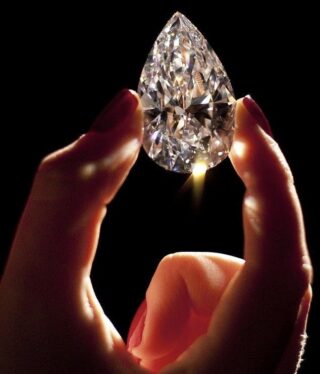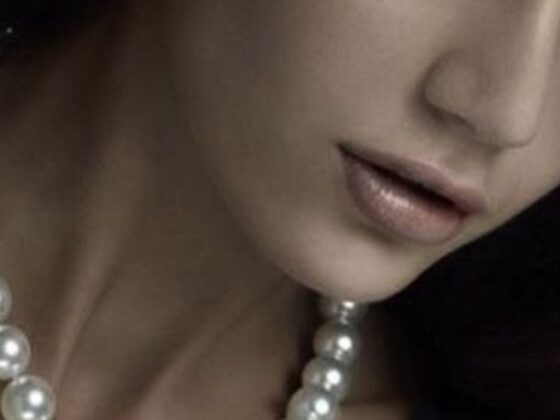Diamonds are revered for their brilliance and value, yet differentiating between real and fake diamonds can be perplexing. In a market saturated with imitations, deciphering a genuine diamond from a counterfeit requires a thorough understanding of the gem’s intricate characteristics. Let’s embark on an illuminating journey through the facets of diamond authentication, equipping you with a meticulous understanding to confidently discern the authenticity of this coveted gemstone.
The Diamond Dilemma: Real vs. Fake
The allure of diamonds stems from their rarity, exquisite beauty, and inherent value, making them prime targets for imitation. Synthetic diamonds, cubic zirconia, moissanite, and other simulants closely mimic the appearance of real diamonds but possess distinct chemical compositions and optical properties. Recognizing the disparities between these imitations and genuine diamonds is essential and requires a meticulous eye for detail.
The 4Cs: A Primer
The foundational criteria for assessing a diamond’s quality are the 4Cs: cut, colour, clarity, and carat weight. The cut determines a diamond’s brilliance and symmetry, influencing its overall appearance. The colour scale ranges from colourless to varying degrees of yellow or brown. Clarity refers to the presence of imperfections or inclusions that affect transparency and brilliance. The carat weight measures the diamond’s size. A comprehensive understanding of these factors aids in recognizing the unique attributes of a genuine diamond.

Basic Home Tests: Initial Assessments
Preliminary tests offer an initial glimpse into a diamond’s authenticity. The fog test involves breathing warm air onto the stone; authentic diamonds disperse heat rapidly due to their high thermal conductivity, while simulants retain fog for a more extended period. The newspaper test entails placing the diamond on printed text; authentic diamonds refract light, causing the text to be less readable through the stone. While these tests provide initial insights, they are not foolproof methods for authentication.
The Sparkle Factor: Light and Brilliance
The captivating brilliance of a diamond is attributed to its ability to refract and reflect light. Authentic diamonds refract light, creating a mesmerizing display of spectral colours known as fire. The stone’s facets and precision in cutting contribute to its scintillation and sparkle. Simulants often lack the natural brilliance and play of light seen in genuine diamonds, appearing dull or devoid of vibrant sparkles under various lighting conditions.

Professional Verification: Expert Examination
For a meticulous evaluation, seek verification from certified gemologists or reputable jewellers with expertise in diamond assessment. These professionals utilize specialized tools such as loupes (magnifying glasses) and microscopes to inspect the stone’s internal characteristics. They scrutinize aspects like inclusions, blemishes, and the overall craftsmanship to determine authenticity based on industry-standard parameters.
Certifications: Diamond's Passport
Diamond certifications, provided by renowned gemological laboratories like GIA (Gemological Institute of America) or AGS (American Gem Society), serve as documented proof of a diamond’s authenticity. These certificates meticulously detail the diamond’s 4Cs, providing an unbiased and precise evaluation of its quality, origin, and characteristics. Insist on obtaining a certificate when purchasing a diamond to ensure transparency and authenticity.
Synthetic Diamonds: The Growing Trend
The emergence of synthetic diamonds as a viable alternative to natural stones has introduced a new dimension to diamond authentication. These lab-grown diamonds possess identical chemical compositions and physical properties as natural diamonds but are created in controlled environments. Distinguishing between natural and synthetic diamonds may require sophisticated equipment that analyzes growth patterns or laser inscriptions.

The Importance of Setting and Mounting
An authentic diamond is often set in high-quality metals like platinum or high-grade gold. The setting and mounting of the stone are crucial; genuine diamonds are secured in well-crafted settings that not only enhance their brilliance but also ensure durability and security. Assessing the craftsmanship and quality of the setting can provide additional insights into the diamond’s authenticity.
Historical Provenance and Documentation
Heritage or antique diamonds often come with historical provenance and documentation detailing their origin, previous owners, or notable events. These unique gems carry a storied history, and documentation serves as a valuable authentication marker. Examining historical context and accompanying documents can provide additional confirmation of a diamond’s authenticity and provenance.
Conclusion: Ensuring the Elegance
Authenticating a diamond involves a meticulous and multifaceted approach encompassing knowledge, observation, and expert verification. While basic home tests offer preliminary insights, professional examination, certifications, and understanding the diamond’s provenance contribute to a comprehensive authentication process.
Each diamond embodies a tale within its breathtaking facets, a narrative of unparalleled elegance and timeless beauty. Understanding and appreciating the authenticity of a diamond elevates its allure, transforming it into a cherished symbol of sophistication and grace. Whether an heirloom passed through generations or a recent acquisition, the authenticity of a diamond enhances its significance and value, making it a treasured possession to be admired for generations to come.
Love,
Team LadyInRoseGold




















